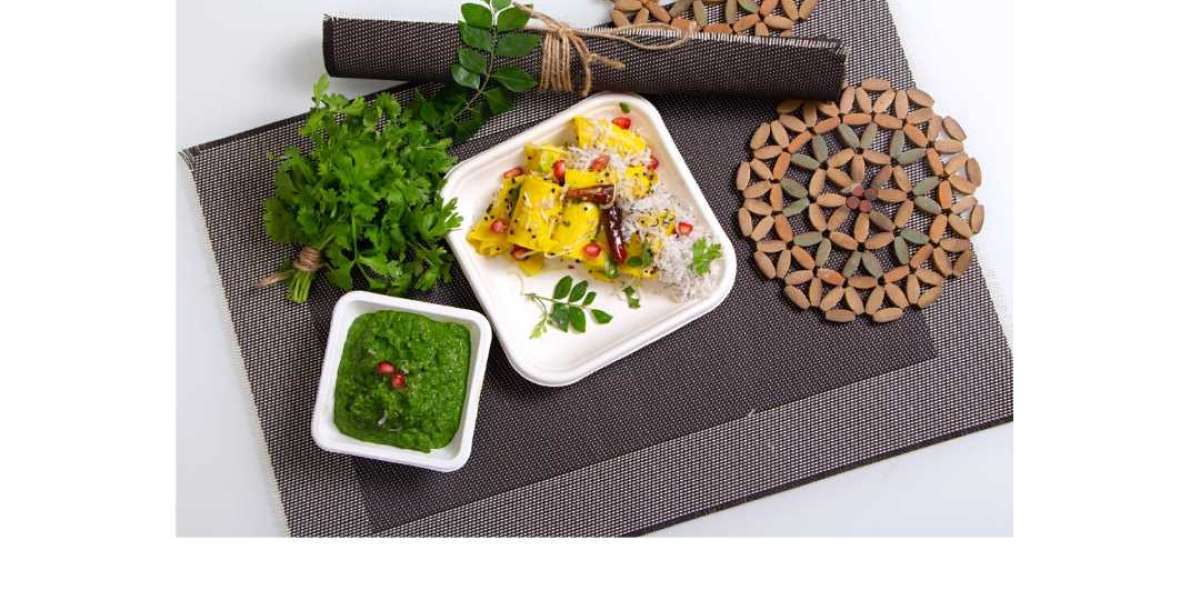In an era where sustainability is more critical than ever, the search for eco-friendly alternatives to conventional packaging materials has led to some remarkable innovations. Among these, bagasse plates have emerged as a game-changer in the realm of sustainable food packaging. Derived from sugarcane waste, bagasse plates offer an environmentally responsible solution that addresses the pressing issues of plastic pollution and resource depletion. This blog explores how bagasse plates are revolutionizing eco-friendly food packaging and why they are becoming a preferred choice for both consumers and businesses.
The Rise of Bagasse Plates
Bagasse is the fibrous byproduct that remains after extracting juice from sugarcane. Historically considered waste, this material is now being repurposed into a variety of products, including eco-friendly plates. The utilization of bagasse in food packaging reflects a broader trend towards circular economy principles, where waste materials are transformed into valuable resources.
Environmental Benefits of Bagasse Plates
Biodegradability and Compostability
One of the most significant advantages of bagasse plates is their biodegradability. Unlike plastic plates that can take hundreds of years to decompose, bagasse plates break down naturally within a few months. Moreover, they are compostable, meaning they can be turned into nutrient-rich compost that benefits the soil, reducing landfill waste and contributing to a more sustainable waste management system.
Reduced Carbon Footprint
The production of bagasse plates generates a lower carbon footprint compared to traditional plastic or even paper plates. The process involves repurposing agricultural waste, which means fewer raw materials are required. Additionally, the energy used in manufacturing bagasse plates is often lower than that for plastic plates, further reducing their environmental impact.
Resource Efficiency
Using bagasse maximizes the utility of sugarcane crops by ensuring that every part of the plant is used. This approach supports sustainable agricultural practices and reduces the need for additional raw materials. By converting what was once considered waste into useful products, bagasse plates exemplify resource efficiency and sustainability.
Practical Advantages of Bagasse Plates
Durability and Strength
Bagasse plates are known for their sturdiness and durability. They are more rigid than traditional paper plates and can hold both hot and cold foods without becoming soggy or losing their shape. This makes them a practical choice for a variety of dining scenarios, from casual picnics to formal events.
Heat Resistance
Another standout feature of bagasse plates is their heat resistance. They can withstand high temperatures, making them microwave-safe and suitable for serving hot meals. This property gives them an edge over many other types of eco-friendly plates that may not handle heat as effectively.
Versatility
Bagasse plates come in a range of shapes and sizes, catering to diverse culinary needs. Whether it's a small dessert plate, a sturdy dinner plate, or a compartmentalized tray for a full meal, there is a bagasse plate designed to fit the requirement. This versatility enhances their appeal across different segments of the food service industry.
Bagasse Plates in the Food Service Industry
The adoption of bagasse plates is gaining momentum across various sectors of the food service industry. Restaurants, catering services, and food delivery businesses are increasingly turning to bagasse plates to meet customer demands for sustainable packaging. By offering an eco-friendly alternative, these businesses not only reduce their environmental footprint but also attract eco-conscious consumers.
Restaurants and Cafes
Many restaurants and cafes are now incorporating bagasse plates into their operations to align with their sustainability goals. This shift helps them reduce waste, enhance their brand image, and meet the expectations of environmentally aware customers.
Catering Services
Catering companies are finding bagasse plates to be an ideal solution for large events where disposable plates are necessary. The combination of durability, aesthetic appeal, and eco-friendliness makes bagasse plates a preferred choice for weddings, corporate events, and parties.
Food Delivery and Takeout
With the rise in food delivery and takeout services, the need for sustainable packaging has become more critical. Bagasse plates provide a robust and eco-friendly option that maintains food quality during transportation while minimizing environmental impact.
Conclusion
Bagasse plates are at the forefront of the revolution in eco-friendly food packaging. Their environmental benefits, coupled with practical advantages, make them an excellent alternative to conventional plastic and paper plates. As more businesses and consumers recognize the importance of sustainable practices, the adoption of bagasse plates is likely to continue growing. By choosing bagasse plates, we can take a significant step towards reducing our environmental footprint and promoting a more sustainable future for all.
Embracing this innovative solution not only supports the environment but also sets a positive example for others to follow. In the quest for a greener planet, bagasse plates are proving to be a crucial ally in the fight against plastic pollution and resource depletion.








